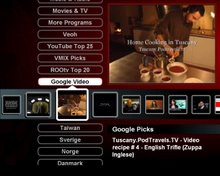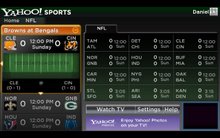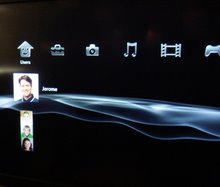Linked below is a report that HP will exit the Media Center PC business. Reading the details, the author describes an MCE PC-in-the-living-room. The claim is they are: too loud, too complex to set-up, too expensive, too complicated to maintain and have annoying DRM issues.
- [quote] HP is pulling out of the Digital Entertainment Center (DEC) business. The company that pioneered the living-room form factor for Media Center Edition (MCE) PCs has decided to drop the line.
The company instead will focus its energy on MediaSmart, the new brand of TVs with digital media adapters [DMA] built in -- not Microsoft Media Center Extenders that link Media Centers with remote TVs, but HP's own solution for distributing photos, music, video and other content (including Web-based) to the TV. [end]
It is claimed, HP will now follow the DMA approach; which combines an Extended-PC with a networked TV or networked DMA. This is similar to the approach taken by active-TV and Apple-TV.
The HP MediaSmart TV does not use active-TV technology but appears to rely on a built-in microbrowser. This gives the TV some standalone capability when accessing web content; but not access to the wide range of existing TV-web channels enabled via an Extended-PC assisted by active-TV technology.
The author is careful to point out the difference between a TV-DMA combination and Microsoft Extender technology; the later leaves broadcast TV reception at the PC. The Microsoft approach consumes home network bandwidth even when watching broadcast TV. (For example, viewing recorded TV at the Extender location.) The active-TV approach also leaves broadcast reception at the TV, and hence is much better suit for combining with high-def TV reception.
Active-TV technology is frequently used in Set-Top Boxes (STB) incorporating digital video record (DVR). This is technically difficult to achieve; as it requires the combining of computer networking technology with broadcast TV reception technology, into a single box. This feature along with utilizing the much more powerful networked PC’s browser for formatting TV-web channels, gives users of active-TV enabled TVs, much more choice.
Feedback, corrections and comments welcome.
more at http://www.cepro.com/news/editorial/18066.html











1 comment:
[...]resource[...]
Post a Comment